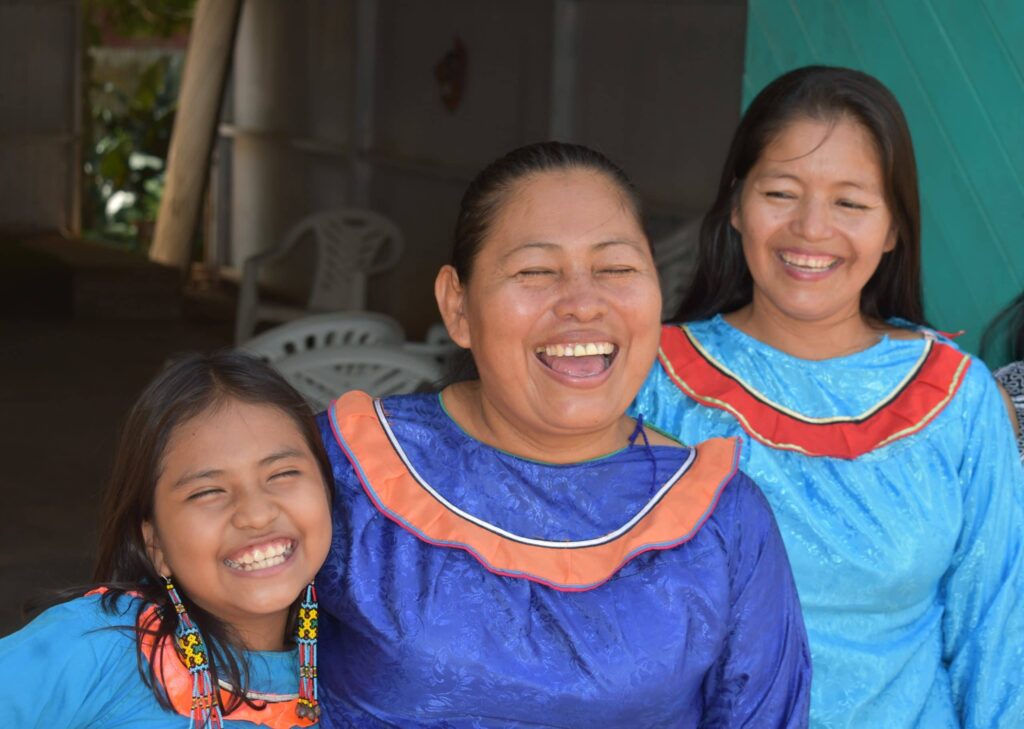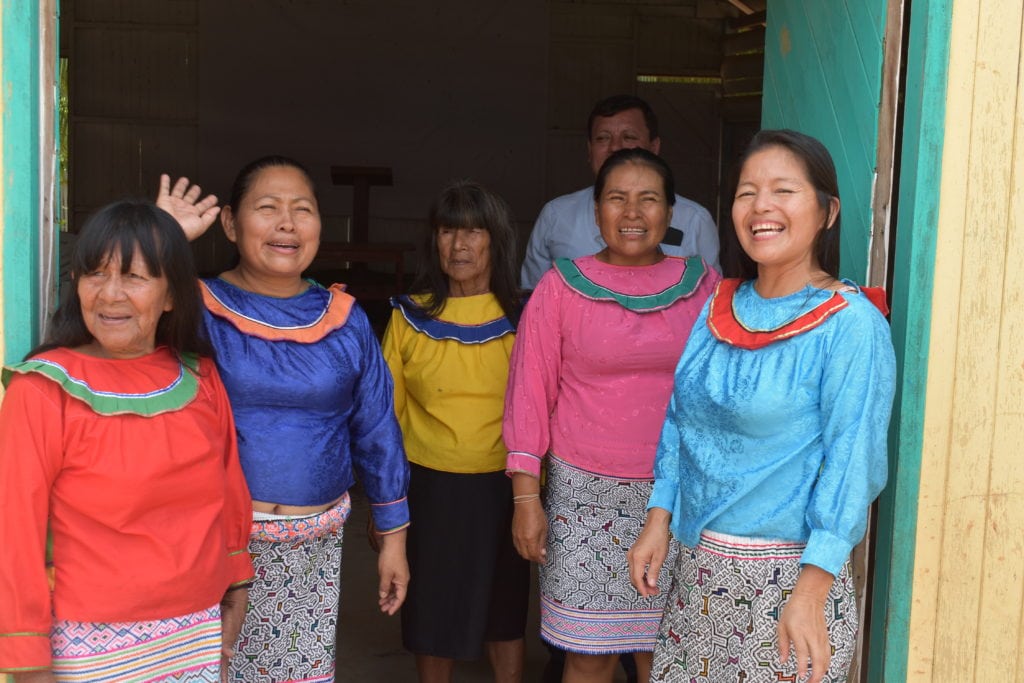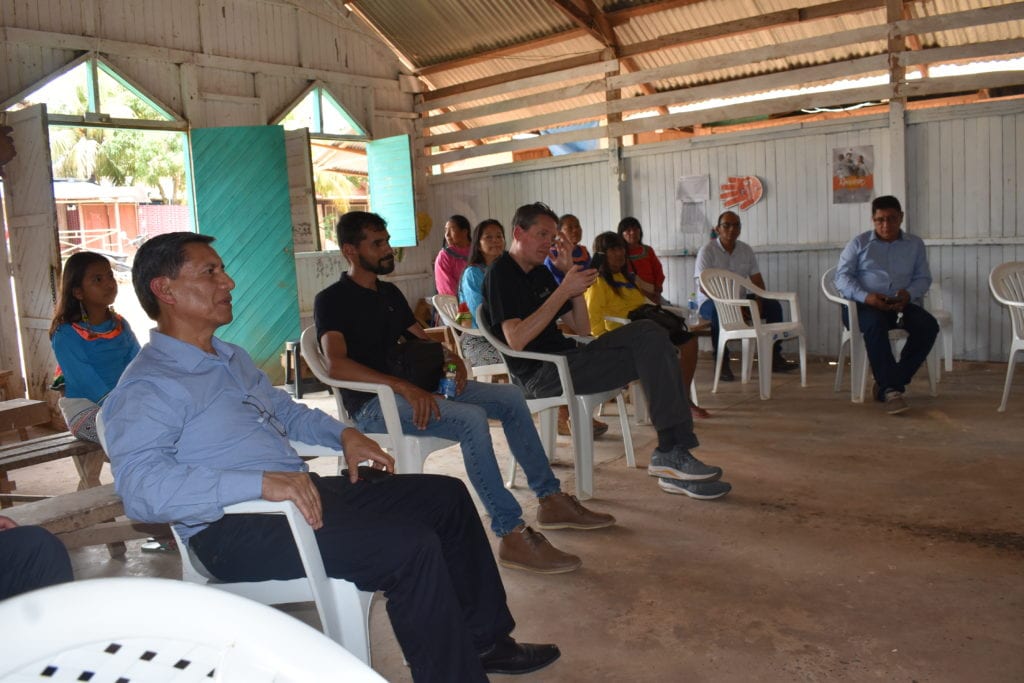In Peru’s Jungle, Mission to Indigenous People Gets a Facelift
Maranatha’s support in the Amazon is making a tangible difference for God’s kingdom.
February 5, 2023 | Peru | Marcos Paseggi, Adventist Review
If Clyde Peters could visit the Peruvian Amazon today, he would not be able to believe his eyes. The pioneer Seventh-day Adventist mission pilot who flew over the Ucayali River in the Amazon jungle in northern Peru in the 1960s would be surprised to find how much the Adventist Church has grown in the area.
The city of Pucallpa, “the gateway to the Amazon region,” has around 75 Adventist congregations. In five of them, most members belong to one of the 14 indigenous tribes along the banks of the Ucayali. Some indigenous members are third- and fourth-generation Adventists. Most of these developments can be traced back to the mission service of Peters and his family.
Seeds of the Gospel

Bilingual teacher Charito (right) with a sister and a young member of La Selva Adventist church, one of five Seventh-day Adventist indigenous congregations around Pucallpa, Peru. With Maranatha’s support, they are looking for ways to increase their missionary imprint among area tribes. [Photo: Marcos Paseggi, Adventist Review]
“Grandfather loved fishing along the Ucayali,” Charito, who belongs to the Shipibo-Conibo peoples, says. She repeats a story her parents have told her many times. “Grandfather would spend weekends on his boat, looking for the tasty paiche and other fish.” But after he got to know Jesus and the truth of the Bible, grandfather changed his habits, Charito says. “Now he would leave early on Friday and come back in the afternoon with fresh fish, which he would prepare for our Sabbath meals.”
Those were the humble beginnings of the Adventist message among the indigenous communities of the Ucayali. Peters’ sacrifices included being rescued from the river by the local residents after his overloaded plane landed in heavy rain and began to sink. His mission adventures eventually became a book.*

A group of women church members of the La Selva Adventist church in Pucallpa welcomes Maranatha and Adventist Church leaders to their congregation. They belong to the Shipibo-Conibo peoples, one of at least 14 indigenous tribes along the Ucayali River. [Photo: Marcos Paseggi, Adventist Review]
Mission to the City
When Charito, Eunice, and others finished high school in their native jungle villages, they decided to move to the city of Pucallpa to attend college. Without money or relatives in the city, many of the indigenous students would pitch a makeshift plastic tent in an empty lot just to be able to pursue their studies. “It was a tough life,” Charito says, “with no running water, sanitary services, or the most basic comforts.”
Even at those difficult times, Adventist students began to share their beliefs with their indigenous classmates.
Since those hard beginnings, the government stepped up to increase indigenous representation at schools in the area. Nowadays, the National Intercultural University of the Amazon in Pucallpa caters to students from at least 14 indigenous regional tribes. Government residences provide a comfortable bed and essential services to indigenous students for just 1 Peruvian Sol (about US$0.25) a month.

Maranatha and Adventist Church regional leaders, together with some church members, listen to the mission plans of the La Selva Adventist church. The congregation hopes to reach many indigenous students who move from isolated communities to Pucallpa to attend college. [Photo: Marcos Paseggi, Adventist Review]
A Growing Church Community
La Selva church members now see a wonderful opportunity for mission in the area. Fourteen years ago, members raised funds to build their current church building. But the building needs to be improved if they want to keep growing. “We want to bring more people to Jesus,” Charito says. “But we need an upgrade to our facilities if we want to invite more students to worship God and study the Bible.”
Maranatha Volunteers International, a supporting ministry of the Adventist Church, has partnered with Adventist church leaders in northern Peru to help build or rebuild scores of churches in 2023. There are many challenges because Maranatha does not receive funds from the organized church, and projects depend on private donors. Also, there are logistical and practical considerations.

La Selva Adventist church members hope that with the support of Maranatha, they will soon have a new church building which will make it easier for them to invite people to worship and study the Bible at their facilities. [Photo: Marcos Paseggi, Adventist Review]
“There’s a mostly untapped mission field in the local university,” Charito says. “We are willing, and we are ready to reach out and invite more indigenous students to our services. A new church building will certainly help. After all, it’s about bringing more people to the kingdom.”
_______________________________
* Wellesley Muir, The Man Who Jumped Off Clouds (Hagerstown, MD: Review & Herald, 2000).